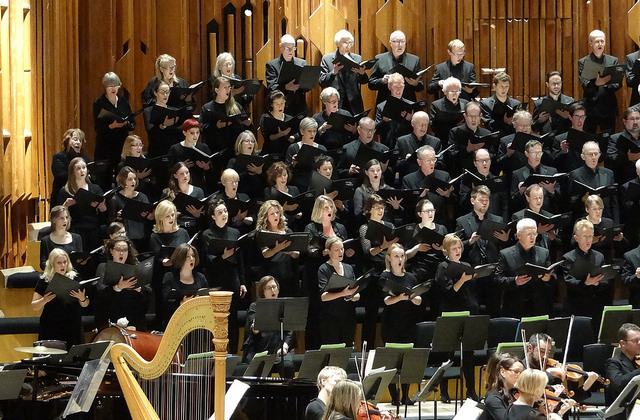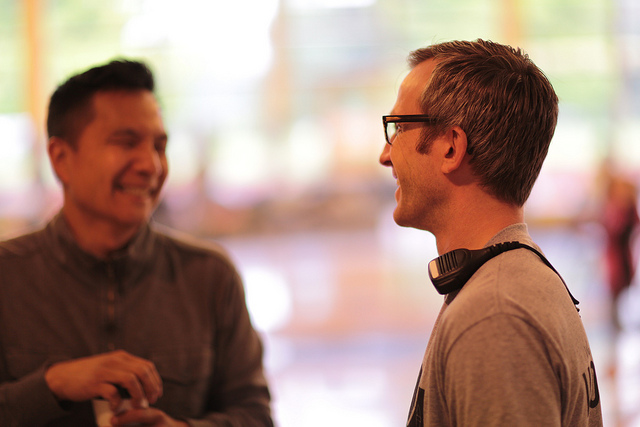opinion
Pressures on leaders
The world of the average executive isn’t becoming any less demanding or any less exacting. Leaders are increasingly expected to do more and more with less and less, the stakes seem to get higher and higher, and growing uncertainty in a global, economic and political sense exerts increasing pressure.
Equally, leaders are often in lonely positions where, in order to convey that they have everything under control, they lack the trust they need in order to share their fears, doubts and anxieties – and so get valuable input from others.
Resilience
The need to build and maintain resilience seems more pressing than ever. And by ‘resilience’ I mean not so much the ability to simply cope, but more the capacity to consistently adapt to changing circumstances, to learn from adversity, and to manage intense emotions and uncomfortable thinking in oneself and others. We need to learn to flex in our responses to adversity.
We can build resilience in a number of ways and from a number of perspectives. It needs to be a constant work in progress.
Preserving wellbeing: the priority
The priority is to preserve wellbeing, for without this our effectiveness inevitably leaks away. The stress hormone adrenalin, which our bodies call on to help us get through a crisis or a threat, can only keep us going for so long: it isn’t a sustainable or permanent solution. It triggers our fight-or-flight response – but excessively high levels of adrenalin due to stress without real danger can cause heart damage, insomnia, and a jittery, nervous feeling. Prolonged stress can also morph into mental health problems such as depression or anxiety. We need to constantly work on maximising a sense of inner peace, albeit punctuated by occasional peaks of stress.
A sense of purpose
Important too is a sense of purpose: when life is meaningful because it allows the individual to fulfil their personal purpose, that individual will not only have a sense of groundedness, but they will feel mentally energised and resourced to engage with the adversity they are encountering. Well-known in this context is the work of concentration camp survivor Dr Viktor Frankl, who famously wrote in ‘Man’s Search for Meaning’: ‘The quest for meaning is the key to mental health and human flourishing’. Those who survived their appalling experiences in concentration camps tended to be those who had formulated a purpose to work towards, and whose lives were therefore meaningful to them.
Mindfulness helps
I recently had the privilege of participating in the book launch of ‘Mindfulness for Coaches’ by Michael Chaskalson and Mark McMordie. Unlike any other book launch I have ever attended, this one engaged its guests in the active experiencing of mindfulness. The sense of presence and peace in the room – simply through a group of people experiencing present-moment awareness – created for me and for others at the event a fertile and immensely strengthening sense of energy and creativity which felt to me, at least, as though it was actively nourishing my resilience. Developing a practice of mindfulness has also been shown from a neuroscience point of view to contribute to resilience.
Letting go of attachments
That experience linked to an event I have also been privileged to attend, organised by Action for Happiness in London: ‘Beyond the Self’ with writer and Buddhist monk Matthieu Ricard and distinguished neuroscientist Professor Wolf Singer talking about their jointly published book. As I listened to these two eminent figures, I realised with greater clarity than ever before how the ability to let go of attachments (i.e. having an absolute perceived need for an outcome, an object, an event, a fear, a regret or indeed anything else) not only brings greater calm to ourselves and those around us but also has the capacity – through increased flexibility of thinking and an enhanced capability to adapt to situations of adversity – to strengthen our resilience.
Photo by Alex Berger via Compfight
Building resilience in a tougher world
We all - and particularly leaders - seem to be experiencing more and more pressure in our modern world. The need to build and maintain resilience seems more pressing than ever. By ‘resilience’ I mean not so much the ability to simply cope, but more the capacity to consistently adapt to changing circumstances, to learn from adversity, and to manage intense emotions and uncomfortable thinking in oneself and others. We need to learn to flex in our responses to adversity.
Read more »'Just being': my article in Coaching at Work
Transactional coaching objectives are irrelevant to some of my clients. 'Doing’ keeps them out of trouble but offers no fulfilment or satisfaction, whereas - ironically - 'being' and objective-free coaching offers them the time and space that are essential for them to profoundly engage with their coaching objectives
Read more »Honesty, wellbeing and mental health
Mental ill-health in organisations may be a taboo subject and may carry a stigma. Sufferers may suffer in silence until their condition worsens to the point of crisis. When crisis does strike, in addition to individuals’ difficulties, the organisational upheaval and cost can be significant, as can the damage to working relationships. However, in an open culture people are more likely to feel engaged and to give of their best, and evidence shows that business results are much better than in cultures where the issue is not faced. It is the coach's responsibility to work with whatever shows up - but not to aim to heal or cure.
Read more »A sense of belonging
The deepest human need is to belong. A strong sense of belonging and connectedness is positively associated with wellbeing, happiness and mental health. Feelings of belonging are understood to influence an individual’s identity and the extent to which they feel accepted, respected, valued for who they are - and these feelings in turn, by strengthening relationships, impact on engagement, effectiveness and productivity
Read more »Confidence, effectiveness and systems
Confidence that is depleted – which often results from an individual interpreting an external event or behaviour, and believing (albeit unconsciously) the message that they construct from it – leads very easily to effectiveness that is depleted. Looking outwards from the individual into their environment and the systems of relationships they are part of is often a more elegant and rapid process, offering more sustained and richer outcomes for rebuilding and re-resourcing, than cognitive approaches.
Read more »Stress, relationships and business results
Line managers can unwittingly create damaging stress in the relationships they have with their reports. This can come from their modelling themselves against others whose values they don't share - and once they allow themselves to be their authentic selves their working relationships can be transformed. Systemic coaching blended with comfort working with mental health issues can resource the client in valuable ways.
Read more »Leadership in professional service firms
Leadership is particularly complex and demanding in professional service firms such as law and accountancy. In such firms not only is profit generated through each fee-earner's billable hours, but the distribution and clarity of power is less clear, more diffuse and less demarcated than in other organisations. Leadership is an ambiguous matter of high autonomy and yet often high consensus.
Read more »A Bigger Conversation
Relationships - between people, and between people and events, behaviours, beliefs, cultures and outputs - are the key to organisational health. Sometimes skilled, capable and experienced leaders don't seem fully able to occupy their authority, sometimes the same challenge seems to recur repeatedly. Such challenges may require a Bigger Conversation: a conversation that addresses not just individuals or individual issues, but which sees them as an ecosystem.
Read more »Influence, impact and culture change: a systemic view
When a new broom comes in to a senior role with high expectations, but is inexplicably unable to occupy their authority, the situation can benefit from a systemic constellations perspective. This means looking at what might have been ignored in the organisation’s remembering, what or who might have been excluded or unacknowledged - and especially what might not have been acknowledged about the contribution of a previous occupant of the role. Energy is then released and the leader is freed up to do what they do best.
Read more »Compassionate leadership
Compassion at work increases our willingness to trust: our brains respond more positively to bosses who have shown us empathy – and compassion increases the health and wellbeing not only of employees but also of the bottom line. When compassion is low, engagement and levels of discretionary effort are low, retention and recruitment are more difficult, stress and absenteeism are high, and success becomes more elusive.
Read more »











